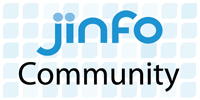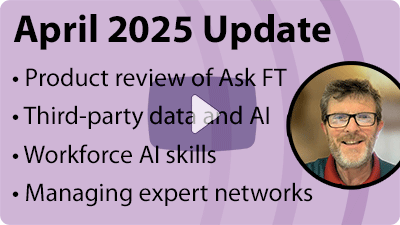 Making Current Awareness Part of Digital Literacy
Making Current Awareness Part of Digital Literacy
Jinfo Blog
19th November 2014
Abstract
Current awareness is increasingly in the hands of the end user. Information professionals are ideally placed to train users in best practices, covering all the different options available to users. As Steve Bynghall explains, one option is to make this a component of digital literacy programmes.
Item
 Has Current Awareness Changed?
Has Current Awareness Changed?
Over the past few years a mixture of technology, sophisticated levels of internet use and sharing sources via social media has gradually placed current awareness and access to specialist sources of news firmly in the hands of the end user, and making them far less reliant on the intermediary.
This doesn't mean that current awareness provided by corporate information departments is now redundant. There is obviously a lot of work to do in providing targeted premium content to different groups, helping users to save time, ensuring compliance and working with the best sources.
However it does mean that users now have a variety of options: those provided by organisations, provided directly to them as individual consumers, and more informally via social media. The use of mobile devices has also extended the possibilities.
A New Role for Information Professionals
Given the variety of choice of sources along with the expectation that users can organise their own information sources, information professionals are well placed to add value by giving their insights into how to access, find and filter news so users are kept up to date on different subjects.
In fact, arguably in some instances, user education may prove a more valuable use of time for information professionals than facilitating access to different sources, particularly if these are not being used.
An essential part of training is to look at current awareness holistically with all the options available to a user, not just the services provided by corporate information departments. This helps users to take ownership of the activity of current awareness, and work in more efficient ways to suit individual needs and tastes.
The Rise of Digital Literacy Programmes
One opportunity to raise awareness and provide specific training on current awareness is via the wider umbrella of digital literacy. Digital literacy (skills knowledge and confidence) is increasingly being seen as a source of competitive advantage for organisations. This is reflected in the growth of reverse mentoring programmes where digitally-confident millennials coach senior management, and even initiatives to raise the digital skills of customers, for example with Barclays and its Digital Eagles programme.
These sorts of programmes provide a potential vehicle to also cover current awareness, which often utilises social tools. Being able to better organise your own learning and information management should be an aim for any digital literacy programme.
In addition there are a number of other options for training users, such as providing online resources and videos, elearning, carrying out face-to-face sessions and workshops.
Find Out More
FreePint Subscribers can read Steve's in-depth Article "Is Current Awareness Now About Personal Knowledge Management?" to find out how current awareness has changed, what the must-haves are for current awareness training today, how personally-selected resources fit into current awareness, as well as the next steps information professionals should take to train users in effective current awareness searches.
This Blog Item is part of the FreePint Topic Series: News, and Beyond.
- Blog post title: Making Current Awareness Part of Digital Literacy
- Link to this page
- View printable version
- Is Current Awareness Now About Personal Knowledge Management?
Monday, 17th November 2014 - Has "Current Awareness" Become a Bloated Term?
Tuesday, 11th November 2014 - What's the Value of Current Awareness?
Tuesday, 11th November 2014 - Approaches to Delivering External News on the Corporate Intranet
Tuesday, 28th October 2014 - Issues of Copyright for Current Awareness
Monday, 20th October 2014
- Is It Worth Paying for Premium News Sources?
Wednesday, 12th November 2014 - Shaking Up the World of News
Tuesday, 11th November 2014
Vendor adoption of AI
Community session
23rd May 2024
AI prompting and AI-sourcing, US private companies, and Jinfo on YouTube
Blog posting
10th April 2024
April 2024 Update
YouTube video
10th April 2024
- AI prompting and AI-sourcing, US private companies, and Jinfo on YouTube
10th April 2024 - AI practical actions, prompting and outsourcing
6th March 2024 - GenAI and ESG wisdom of the Jinfo crowd
13th February 2024
- Jinfo Community session (TBC) (Community) 20th June 2024
- Vendor adoption of AI (Community) 23rd May 2024
- Offshore, outsource or AI-source? (Community) 16th April 2024

